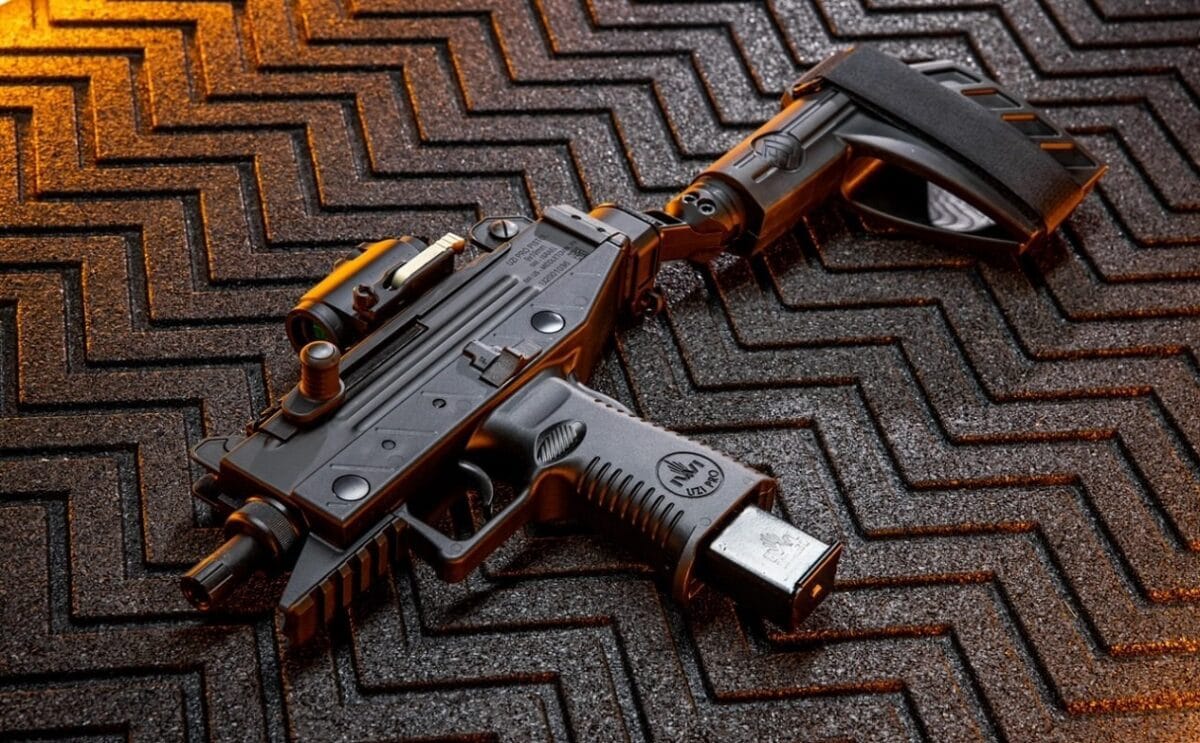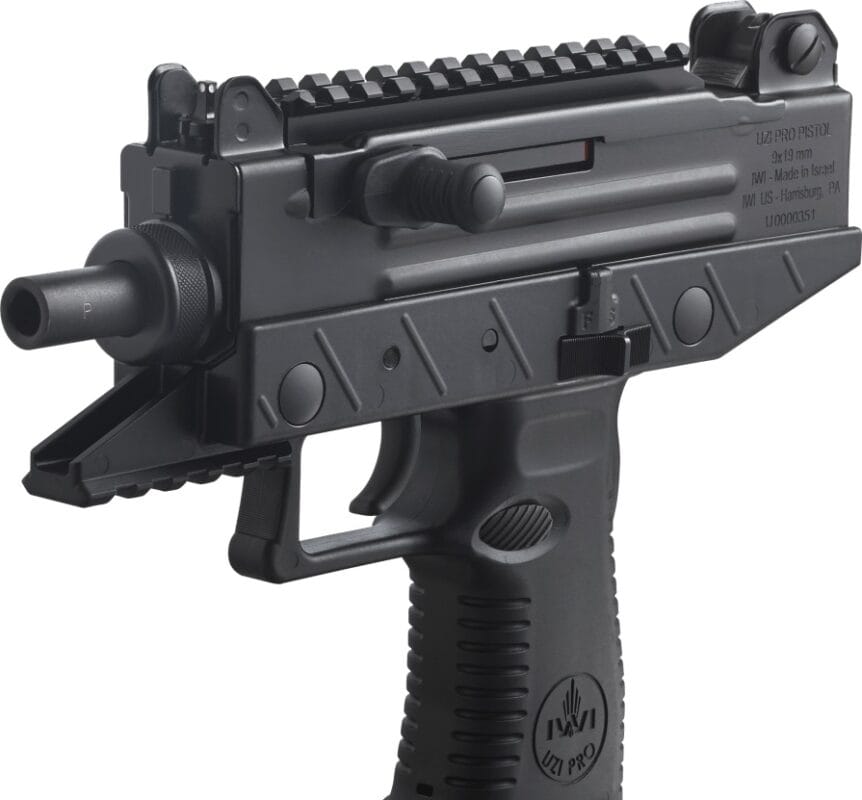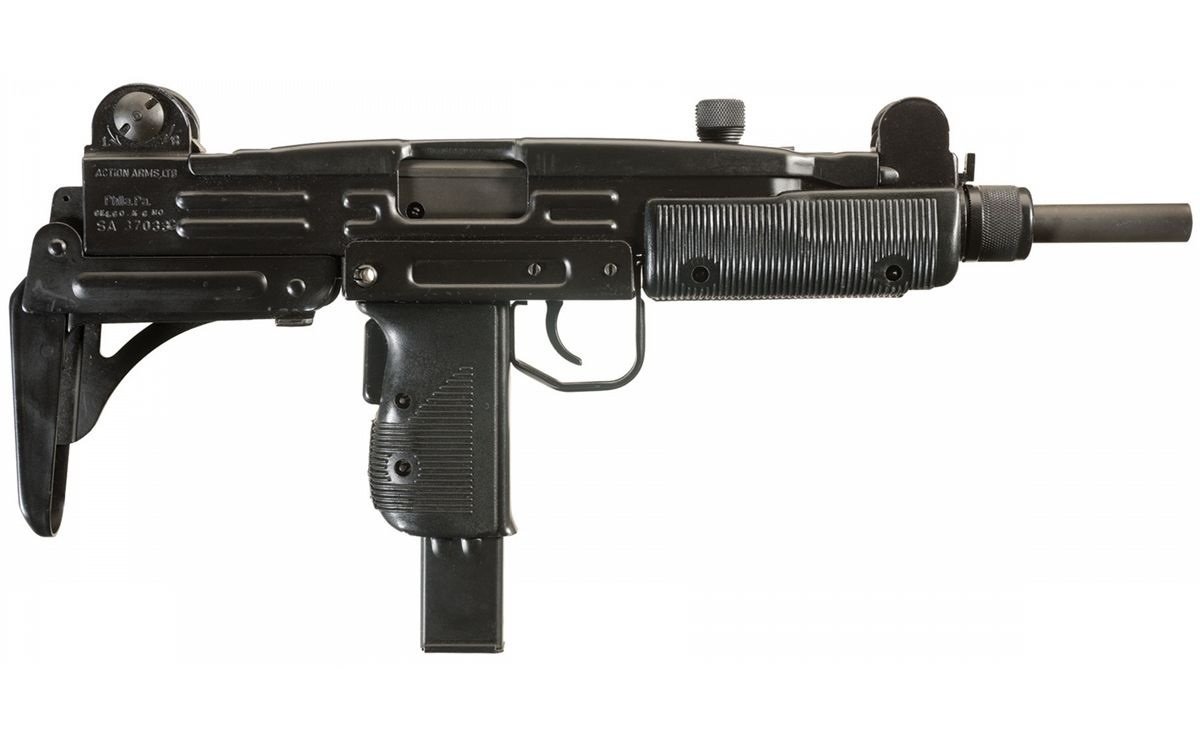Why the Israelis (and the world) Loved the Uzi: A quick glimpse of the famed Uzi submachine gun immediately conjures up many memories. Universally recognizable, the Uzi became synonymous with the Israel Defense Forces and lived large in popular culture in the 1980s – showing up in everything from movies to music videos. It sprays bullets to make adversaries take cover in close quarters combat. It’s compact for soldiers in tanks, armored personnel carriers, or in airborne drops. And it gave Israelis confidence at a time when the country was emerging and fighting for its survival in the Middle East.
History of the Uzi
Israel had to fight its way out of trouble since its founding in 1948. The Israelis had used a mishmash of small arms they received from other countries and even took civilian rifles and shotguns into battle. They needed something small and powerful that allowed new soldiers to train effectively in a short amount of time.
An Israeli named Uziel Gal, a veteran of the 1948 Arab-Israeli war, took this into consideration. The back story on Gal is illustrative. He had a German name when he escaped from the Nazis and dreamed of a new life in the Middle East. He, unfortunately, had to go to jail in British-run Palestine for illegal gun possession in 1943. Years in prison gave him much time to read and reflect, so he studied mechanical engineering and later joined the Jewish underground and then the military.
Uzi: Small and Easy to Carry
He came up with a prototype in 1950 that had a compact design borrowed from Czech models which could fire in semi-automatic or fully automatic mode. It was 18.5-inches long with its buttstock folded and weighed 7.7 pounds, although it originally had a wood stock. The 25 or 32-round magazine of 9-mm ammunition would be inserted into the grip much like a sidearm is loaded.
Admirable Qualities
Nicknamed the Uzi (Gal really didn’t want the gun to be named after him), the 600-round per minute submachine gun had the balance of a pistol with simple sights. It was easy to shoot, and soldiers were quickly trained on its operation. It resisted sand particles and didn’t malfunction that much. Israel didn’t have much money to develop small arms, so the new submachine gun had to be inexpensive to produce. Therefore, the Uzi had stamped parts that aided in manufacturing, and by 1954, the Israelis began cranking them out in numbers.
Troops gave it high marks and it proliferated throughout the defense forces. Tankers liked its small size. Regular soldiers could load it fast. Airborne troops could finally jump without a bulky long rifle. It was used in the Six-Day War of 1967 and the Yom Kippur War of 1973.
Reagan Assassination Attempt
The Uzi even found its way to America in the 1980s. In March 1981, President Ronald Reagan gave a speech at the Hilton Hotel in downtown Washington, DC. There was a crowd outside the building and Reagan waved as he was getting into a limousine. Then suddenly six rounds were shot at the president. The Secret Service sprang into action. Secret Service Agent Robert Wanko removed an Uzi packed in a special briefcase and the gun was captured in photos that spread around the world.
It was replaced by the M16 in the 1980s. The Israelis needed a rifle with the longer range as the Uzi was not that accurate past 50 meters. The Uzi was finally officially retired by the IDF in 2003. Although it does seem to have made at least a small comeback, if you count the Uzi Pro, that is.
UZI Photo Gallery

Uzi. Image Credit: Creative Commons.

Uzi Pro. Image: Creative Commons.

Uzi. Image: Creative Commons.
Now serving as 1945’s Defense and National Security Editor, Brent M. Eastwood, PhD, is the author of Humans, Machines, and Data: Future Trends in Warfare. He is an Emerging Threats expert and former U.S. Army Infantry officer. You can follow him on Twitter @BMEastwood.

